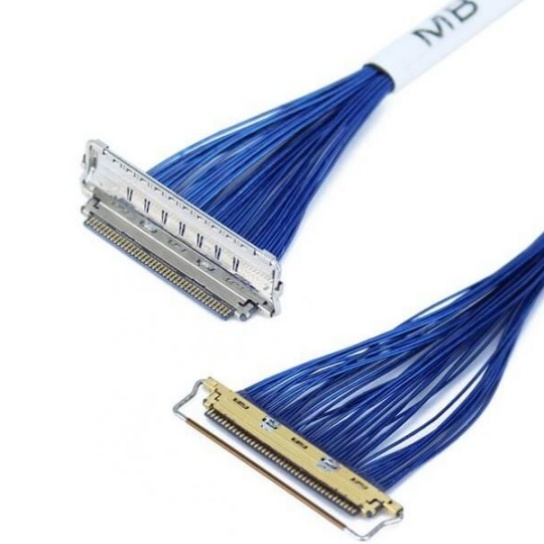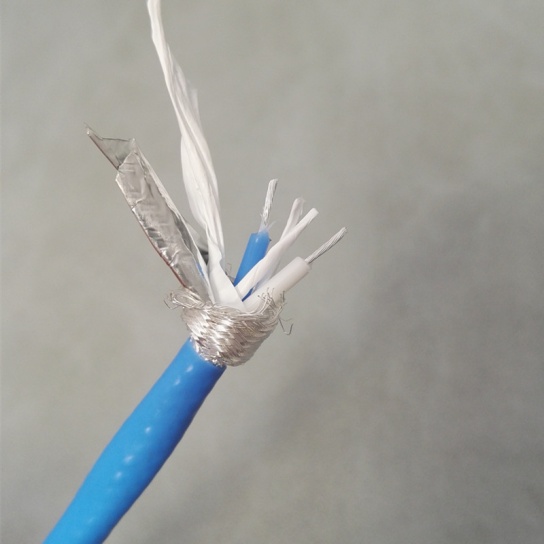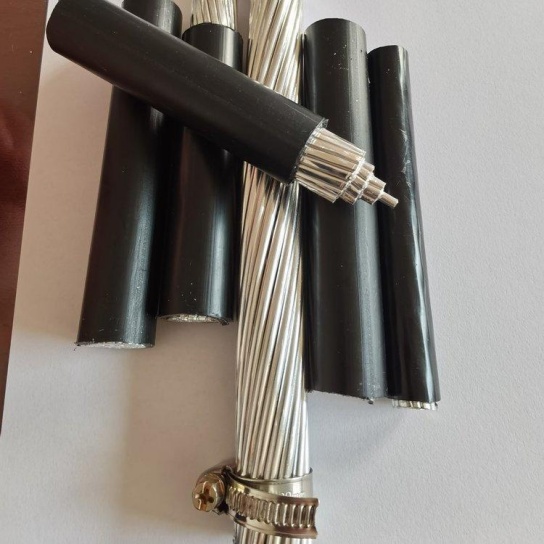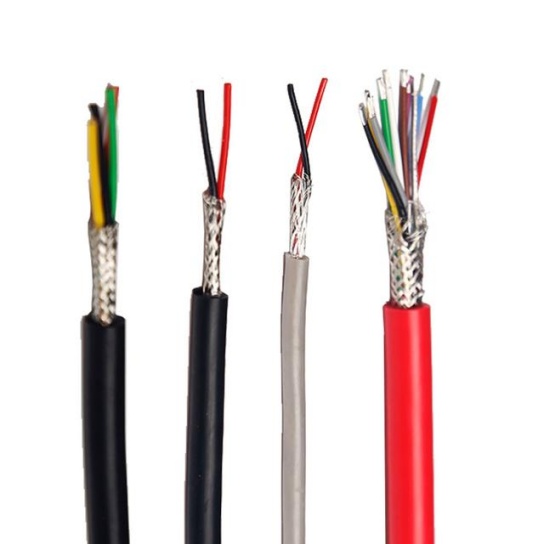Aircraft Cable Assemblies: Ensuring Signal Integrity in Flight
In the aviation industry, where safety, reliability, and precision are non-negotiable, every component plays a pivotal role in keeping aircraft operational and passengers secure. Among these critical components, Aircraft Cable Assemblies stand out as the unsung heroes of signal transmission. From flight control systems and navigation tools to in-flight entertainment and engine monitoring units, these assemblies serve as the “nervous system” of modern aircraft, ensuring that data and signals flow seamlessly—even in the harshest airborne environments. For aerospace manufacturers, maintenance teams, and procurement specialists searching for “Aircraft Cable Assemblies,” the core priority is always signal integrity: the ability of a cable to transmit signals without distortion, interference, or loss. This article explores why signal integrity matters in flight, the key attributes that make high-quality Aircraft Cable Assemblies essential, and how to select a partner that delivers on both performance and compliance.
1. Why Signal Integrity Is Non-Negotiable in Aviation
Aviation systems rely on real-time, accurate signal transmission to function. A single moment of signal degradation or loss could have catastrophic consequences: a delayed signal to the flight control system might compromise maneuverability, a distorted navigation signal could lead to misalignment with air traffic control, and a failed engine monitoring signal could prevent early detection of mechanical issues. Unlike consumer electronics, where minor signal disruptions may cause only inconvenience, in aviation, signal integrity directly ties to safety, regulatory compliance, and operational efficiency.
Consider commercial airliners, for example. A modern Boeing 787 or Airbus A350 uses hundreds of Aircraft Cable Assemblies to connect avionics, sensors, and control units. These assemblies must transmit data at high speeds—often up to 10 Gbps for advanced avionics—while withstanding extreme temperature fluctuations (from -65°C at cruising altitude to 150°C near engines), intense vibration (up to 200 Hz during takeoff and landing), and exposure to moisture, fuel vapors, and electromagnetic interference (EMI) from radar systems or nearby aircraft. Even a 1% loss in signal strength can disrupt critical systems, making the quality of Aircraft Cable Assemblies a make-or-break factor for aerospace operations.
For military aircraft, the stakes are even higher. Fighter jets, transport planes, and surveillance drones operate in combat zones where EMI jamming, shock from explosions, and harsh weather conditions are common. Their Aircraft Cable Assemblies must not only maintain signal integrity but also resist tampering and survive extreme mechanical stress. In these scenarios, subpar cable assemblies aren’t just a liability—they’re a threat to mission success and crew safety.
2. Key Design & Material Attributes of High-Performance Aircraft Cable Assemblies
To ensure signal integrity in flight, Aircraft Cable Assemblies must be engineered with precision, using materials and designs that address the unique challenges of the aerospace environment. Below are the critical attributes that define a reliable product—attributes that anyone searching for “Aircraft Cable Assemblies” should prioritize:
a. Aerospace-Grade Materials
The materials used in Aircraft Cable Assemblies directly impact signal performance and durability.
- Conductors: High-purity copper or copper alloys (such as tin-plated copper or silver-plated copper) are preferred for conductors. These materials offer low electrical resistance, ensuring minimal signal loss even over long cable runs (up to 100 meters in large aircraft). Silver-plated conductors, in particular, excel in high-frequency applications (e.g., radar or satellite communication) by reducing skin-effect losses.
- Insulation: Insulation materials must withstand extreme temperatures, resist chemical degradation, and prevent signal leakage. Fluoropolymers like PTFE (polytetrafluoroethylene) and FEP (fluorinated ethylene propylene) are industry standards—they remain stable from -200°C to 260°C, are resistant to fuel, oil, and hydraulic fluids, and have low dielectric constant (a key factor in minimizing signal dispersion).
- Shielding: EMI is one of the biggest threats to signal integrity in aviation. Aircraft Cable Assemblies use multi-layer shielding (e.g., braided ,aluminum foil, or combination shields) to block external interference and prevent internal signals from interfering with other systems. For military applications, double-braided shielding or conductive elastomers may be used for enhanced EMI protection.
- Jackets: The outer jacket protects the cable from physical damage, moisture, and abrasion. Materials like PEEK (polyether ether ketone) or ETFE (ethylene tetrafluoroethylene) are ideal—they are lightweight, flame-retardant (meeting UL 94 V-0 standards), and resistant to UV radiation and ozone.
b. Precision Design for Airborne Environments
Even the best materials will fail if the cable assembly’s design doesn’t account for aviation’s unique stresses:
- Rigidity vs. Flexibility: Cable assemblies in fixed locations (e.g., engine bays) may be rigid to resist vibration, while those in moving parts (e.g., wing flaps) require flexibility to withstand repeated bending. Engineers often use stranded conductors and flexible insulation to balance durability and flexibility.
- Cable Routing: Poor routing can lead to signal crosstalk (interference between adjacent cables) or mechanical damage. High-quality Aircraft Cable Assemblies are designed with optimized spacing, twisted pairs (for differential signaling), and strain reliefs to minimize crosstalk and prevent wire fatigue.
- Connector Compatibility: Connectors are the weak link in many cable assemblies—loose or poorly sealed connectors can cause signal drops or moisture ingress. Aircraft Cable Assemblies must use aerospace-grade connectors (e.g., AMP, TE Connectivity, or Glenair) with secure locking mechanisms, hermetic sealing (IP67 or higher), and corrosion-resistant plating (e.g., nickel or gold).
3. Application-Specific Requirements for Aircraft Cable Assemblies
Not all Aircraft Cable Assemblies are created equal—different aviation segments have unique needs that demand tailored solutions. Understanding these requirements is critical for anyone searching for “Aircraft Cable Assemblies” to ensure they select a product that fits their use case:
a. Commercial Aviation
Commercial airliners (e.g., Boeing 737, Airbus A320) prioritize reliability, longevity, and cost-effectiveness. Their cable assemblies must:
- Operate for 20+ years with minimal maintenance.
- Support high-bandwidth signals for in-flight Wi-Fi, entertainment systems, and avionics.
- Meet strict fire safety standards (e.g., FAR 25.853, which mandates low smoke and toxicity in case of fire).
- Be lightweight to improve fuel efficiency—even a 1kg reduction in cable weight can save airlines thousands of dollars annually in fuel costs.
b. Military & Defense Aviation
Military aircraft (e.g., F-35 fighters, C-130 transports) require cable assemblies that can survive extreme conditions:
- Resistance to EMI jamming, nuclear electromagnetic pulses (EMP), and chemical warfare agents.
- Compliance with military standards (e.g., MIL-DTL-24643 for shielded cables, MIL-STD-810 for environmental testing).
- Quick-disconnect features for rapid maintenance in combat zones.
- Small form factors to fit in compact aircraft like drones or stealth fighters.
c. Helicopters
Helicopters face unique challenges due to their vertical takeoff/landing (VTOL) design and low-altitude operations:
- High vibration levels (up to 500 Hz) that can damage standard cables—helicopter-specific assemblies use reinforced jackets and strain reliefs.
- Resistance to dust, dirt, and moisture (common in low-altitude flight).
- Flexible designs to accommodate the movement of rotor blades and landing gear.
d. Unmanned Aerial Vehicles (UAVs)
Drones and UAVs (e.g., military surveillance drones, commercial delivery UAVs) need lightweight, compact cable assemblies:
- Miniaturized conductors and connectors to fit in small airframes.
- Low power consumption to extend battery life.
- Resistance to temperature changes (critical for UAVs that fly at high altitudes or in desert environments).
4. Compliance & Certifications: Ensuring Quality for Aircraft Cable Assemblies
Aerospace is one of the most regulated industries in the world, and Aircraft Cable Assemblies must meet stringent global standards to be approved for use. For buyers, compliance is non-negotiable—it’s a guarantee that the product has been tested and validated for safety and performance. Key certifications and standards include:
- AS9100: The global quality management standard for aerospace. Manufacturers with AS9100 certification adhere to strict processes for design, production, and testing, ensuring consistency and reliability.
- FAA & EASA Compliance: The U.S. Federal Aviation Administration (FAA) and European Union Aviation Safety Agency (EASA) require cable assemblies to meet specific performance criteria (e.g., FAA AC 20-152 for avionics wiring, EASA CS-25 for large aircraft).
- RTCA DO-160: A widely adopted standard for environmental testing of avionics equipment. Aircraft Cable Assemblies must pass DO-160 tests for temperature, vibration, humidity, salt fog, and EMI to be approved for flight.
- MIL-STD Standards: For military applications, cable assemblies must comply with U.S. military standards (e.g., MIL-DTL-24682 for general-purpose cables, MIL-STD-461 for EMI control).
When evaluating Aircraft Cable Assemblies, always ask manufacturers for proof of compliance. A reputable supplier will provide test reports, certification documents, and traceability records for every batch—ensuring that the product meets your exact regulatory needs.
5. Rigorous Testing: The Final Step to Ensuring Signal Integrity
Even the best-designed Aircraft Cable Assemblies must undergo rigorous testing to validate their performance. Reputable manufacturers use a combination of in-house and third-party testing to ensure that every assembly meets or exceeds industry standards. Key tests include:
a. Signal Performance Testing
- Insertion Loss: Measures the amount of signal lost as it travels through the cable. For high-frequency applications (e.g., 10 Gbps Ethernet), insertion loss must be less than 0.5 dB per meter at 10 GHz.
- Return Loss: Evaluates signal reflection at connectors or cable junctions. Low return loss (less than -20 dB) indicates minimal reflection, ensuring that most signal power reaches the destination.
- Crosstalk: Tests interference between adjacent cables. In aviation, crosstalk must be less than -60 dB to prevent signal distortion.
- Time Delay Skew: Ensures that signals in twisted pairs arrive at the same time—critical for differential signaling systems like Ethernet or USB.
b. Environmental Testing
- Temperature Cycling: Exposes cables to extreme temperature changes (-65°C to 150°C) for 1,000+ cycles to test material stability.
- Vibration Testing: Subjects assemblies to sinusoidal or random vibration (up to 200 Hz) to simulate takeoff, landing, and turbulence.
- Salt Fog Testing: Tests resistance to corrosion by exposing cables to saltwater mist for 1,000 hours—critical for marine or coastal aviation operations.
- Flame & Smoke Testing: Validates compliance with FAR 25.853 by measuring smoke density and toxicity when the cable is burned.
c. Mechanical Testing
- Tensile Strength: Ensures the cable can withstand pulling forces (up to 50 lbs for small-gauge cables) without breaking.
- Bend Testing: Repeats bending (up to 10,000 cycles) to test for wire fatigue—critical for cables in moving parts.
- Connector Durability: Tests the number of mating cycles (up to 500 for aerospace connectors) before performance degrades.
Every Aircraft Cable Assembly should come with a test report documenting these results. This transparency not only ensures quality but also provides peace of mind that the product will perform reliably in flight.
Choose FRS Factory: Your Trusted Partner for High-Integrity Aircraft Cable Assemblies
When it comes to Aircraft Cable Assemblies that prioritize signal integrity, durability, and compliance, FRS Factory stands as a global leader in aerospace connectivity solutions. For over a decade, we have specialized in designing and manufacturing custom Aircraft Cable Assemblies that meet the unique needs of commercial, military, helicopter, and UAV applications—earning the trust of leading aerospace manufacturers worldwide.
At FRS Factory, we don’t just build cable assemblies—we engineer solutions that ensure signal integrity in the most demanding airborne environments. Here’s how we deliver on our promise:
- Aerospace-Grade Materials: We source only premium conductors (silver-plated copper, high-purity copper), insulation (PTFE, FEP), and shielding (multi-layer braided copper) from certified suppliers, ensuring that every component meets AS9100 and MIL-STD standards.
- Custom Design Expertise: Our team of aerospace engineers works closely with clients to design cable assemblies tailored to their specific needs—whether it’s a lightweight solution for UAVs, an EMI-resistant assembly for military jets, or a high-bandwidth cable for commercial airliners. We use 3D modeling and simulation tools to optimize routing, minimize crosstalk, and ensure compatibility with your existing systems.
- Compliance & Certification: FRS Factory is AS9100-certified, and all our Aircraft Cable Assemblies comply with FAA AC 20-152, EASA CS-25, RTCA DO-160, and MIL-STD standards. We provide full traceability and test reports for every order, so you can be confident in regulatory compliance.
- Rigorous Testing: Our in-house testing lab is equipped with state-of-the-art equipment for signal performance (network analyzers, time-domain reflectometers), environmental (temperature chambers, vibration shakers), and mechanical testing. Every assembly undergoes 100% testing before shipment—no exceptions.
- Global Support: We understand that aerospace projects have tight deadlines. FRS Factory offers fast lead times (as short as 2 weeks for standard orders) and 24/7 technical support, ensuring that you get the cable assemblies you need when you need them. Our team also provides on-site installation guidance and maintenance training to maximize the lifespan of your assemblies.
For aerospace professionals searching for “Aircraft Cable Assemblies” that never compromise on signal integrity, FRS Factory is more than a supplier—we’re a partner in safety and success. Whether you’re building a new aircraft, upgrading avionics, or maintaining a fleet, our custom solutions are engineered to keep your signals strong and your operations secure.
Contact FRS Factory today to discuss your Aircraft Cable Assembly needs. Let’s build a solution that flies with you—every mile, every mission.






